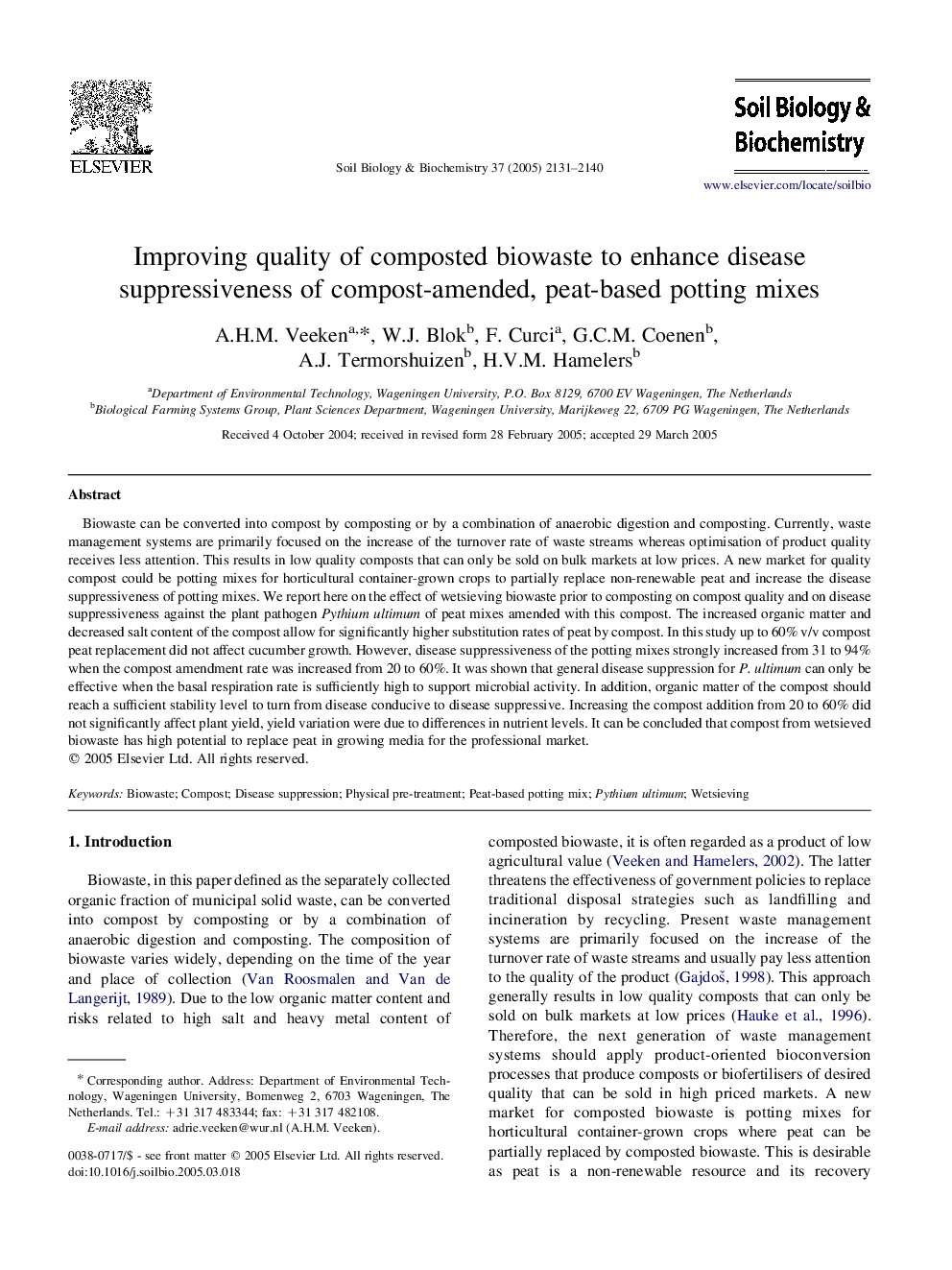| Article ID | Journal | Published Year | Pages | File Type |
|---|---|---|---|---|
| 2027257 | Soil Biology and Biochemistry | 2005 | 10 Pages |
Biowaste can be converted into compost by composting or by a combination of anaerobic digestion and composting. Currently, waste management systems are primarily focused on the increase of the turnover rate of waste streams whereas optimisation of product quality receives less attention. This results in low quality composts that can only be sold on bulk markets at low prices. A new market for quality compost could be potting mixes for horticultural container-grown crops to partially replace non-renewable peat and increase the disease suppressiveness of potting mixes. We report here on the effect of wetsieving biowaste prior to composting on compost quality and on disease suppressiveness against the plant pathogen Pythium ultimum of peat mixes amended with this compost. The increased organic matter and decreased salt content of the compost allow for significantly higher substitution rates of peat by compost. In this study up to 60% v/v compost peat replacement did not affect cucumber growth. However, disease suppressiveness of the potting mixes strongly increased from 31 to 94% when the compost amendment rate was increased from 20 to 60%. It was shown that general disease suppression for P. ultimum can only be effective when the basal respiration rate is sufficiently high to support microbial activity. In addition, organic matter of the compost should reach a sufficient stability level to turn from disease conducive to disease suppressive. Increasing the compost addition from 20 to 60% did not significantly affect plant yield, yield variation were due to differences in nutrient levels. It can be concluded that compost from wetsieved biowaste has high potential to replace peat in growing media for the professional market.
